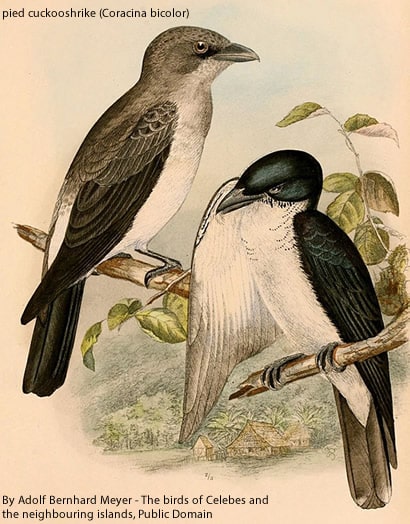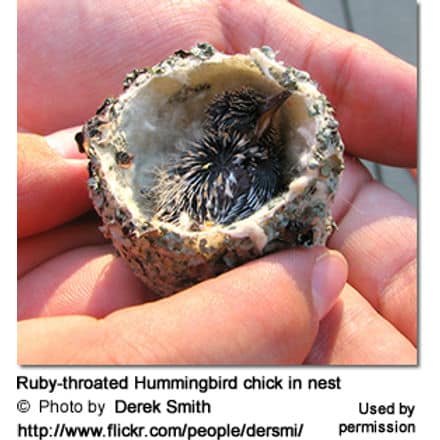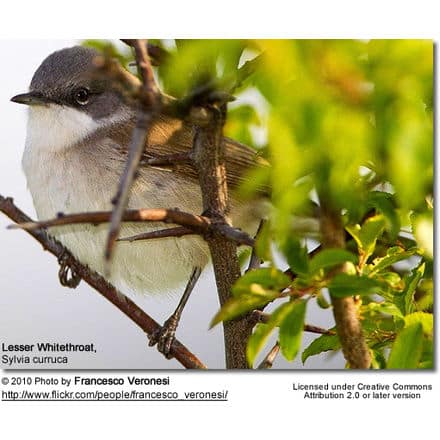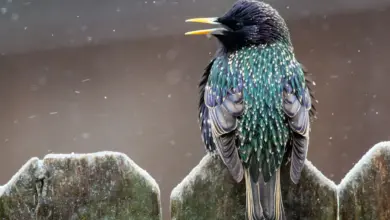Pied Cuckooshrikes (Coracina bicolor) – known as Pied Cuckooshrikes
The Pied Cuckooshrikes (Coracina bicolor) are known by a variety of names within their territories, including – but not limited to – Pied Cuckooshrikes, Muna Cuckooshrikes, Muna Greybirds, Bicoloured Cuckooshrikes or Manu Cuckooshrikes – names which refer to the color of their plumage or their location.
These birds are endemic to the following Indonesian islands: Sulawesi, Sangihe, Manterawu, Bangka, Muna, Butung and Togian, where they inhabit the canope of lowland forests and forest edges, including mangrove forests.
Their numbers have seen a moderately rapid decline due to habitat loss and destruction, and they are therefore considered Near Threatened.
Description:
These large birds measure about 12 inches or 31 cm in length, including the tail.
Males have a black & white plumage; the upper parts are all black except for the white rump; the underparts are white except for the darkish tail.
Females resemble males, except their upper plumage is grey instead of black.
Juveniles resembles females, but are browner and have scattered white feather edgings.
Similar Birds: Female Pied Cuckooshrikes resemble the White-rumped Cuckooshrikes, except for dark eyes and darker grey plumage.
Calls / Vocalizations:
Their songs are described as a ““chew-chew-chew-chew” and some rasping notes.
Global Names:
- Catalan: eruguera bicolor
- Chinese: 双色鹃鵙 / 雙色鵑鵙
- Croatian: crno-bijeli skovranj
- Czech: housenčík černobílý
- Danish: Munagråfugl
- Dutch: Bonte Rupsvogel
- German: Zweifarben-Raupenfänger
- Finnish: munasaarenkäpinkäinen
- French: Échenilleur bicolore
- Italian: Averla cuculo bianconera
- Japanese: shiroharaoosanshoukui / シロハラオオサンショウクイ
- Lithuanian: Dvispalvis medšarkinis vikšralesys
- Norwegian: Svartkvitlarveetar / Svarthvitlarveeter
- Polish: kruczyna dwubarwna
- Portuguese: lagarteiro-bicolor
- Russian: Пегий воронец
- Slovak: húseničiarka dvojfarebná
- Spanish: Oruguero Bicolor
- Swedish: svartvit gråfågel
- Ukrainian: Шикачик строкатий
Cuckoo-shrikes … Cuckooshrike Species Photos





